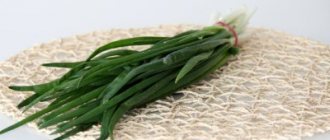AnyutaN — Jan 10th, 2021 Categories: Dried Herbs
Tags: Dried rosemary
Rosemary is a shrub whose young green twigs, flowers and leaves are widely used for culinary and medicinal purposes. The taste and aroma of this plant is spicy, reminiscent of the aroma of coniferous trees.
Ingredients: rosemary Time for bookmarking: Summer
In cooking, rosemary is used to flavor meat and poultry, fish and seafood dishes. The essential oils that this plant is rich in are used for medicinal purposes. Healing tinctures and tea are also made from the shoots of this shrub.
Since rosemary contains a large amount of essential oils, it must be dried with great care. We’ll talk about all the ways to properly dry rosemary in this article.
How to choose good rosemary
So, before you start organizing storage, you need to choose this spice correctly. It is necessary to pay attention to the appearance of the leaves: their color should be rich dark green. They should not look withered. If the bulk of the dark green color contains yellow leaves, albeit in small quantities, then it is better to refrain from purchasing. Most likely, the spices have been lying on the counter for a long time, and their unforgettable aroma has already become much weaker.
If there are black dots on the leaves, then such rosemary leaves should also not be purchased. This may indicate that the plant was sick or was stored incorrectly. In both cases, you will not get pleasure from adding such a seasoning to food.
It’s good if you have the opportunity to assemble a bouquet from leaves yourself. This way you can choose the spice sprigs that are most suitable for all parameters. As a rule, this is possible only in some large stores, but in the market you can negotiate with sellers about such a selective purchase.
Rosemary varieties suitable for storage
There are several types of rosemary found in nature.
But only 2 of them are bred in gardening. Rosemary officinalis is found more often than others. Its straight stems are strewn with dense narrow leaves. This species is grown as a spice and used for treatment. Bushes are planted in gardens and grown on window sills in flower pots. Prostrate rosemary is a bush with a spreading, spherical crown. The shoots grow up to 70 cm in height and are highly branched. Its leaves are thin, like needles, changing shade from light green to bluish.
The following varieties are suitable for storage at home:
- Corsican Blue is a medicinal plant with a well-developed root system.
It has opposite leaves that are greyish-green in color. In late April or early May, small blue flowers bloom on the branches, forming paniculate inflorescences. - The Crimean variety is actively cultivated in the southern regions.
In open beds it grows as a shrub up to 1 m high with leathery, needle-like leaf blades of gray-green color. Harvesting of fragrant foliage and young shoots is carried out from the end of February. - The Tenderness variety has leaves in the form of thin needles up to 4 cm long.
With the onset of autumn, their shade changes from green to gray-blue. In the south it is grown in open beds. In the northern regions - exclusively as a houseplant. - The Rosinka variety is a medicinal crop.
Its low stems are densely covered with dark green linear-lanceolate leaves. They contain a high concentration of essential oils. - The White variety has medicinal properties.
It has bright green, needle-like leaves that are used to make a tonic tincture. The plant is distinguished by unusual white inflorescences. - The Ampelny variety has long shoots hanging down.
They are densely strewn with narrow leaves of bright green color. This variety is very sensitive to frost. Therefore, it is planted only in pots. - The Biryusa variety has glossy leaves with curved edges.
The plant blooms twice a year in March and September with small flowers in blue tones. The variety is very sensitive to low temperatures. That's why they plant it in tubs. - The Blue Winter variety has bluish-green, needle-shaped leaves.
The plant tolerates temperatures well down to -17°C, but in the middle zone it is grown at home.
How to store rosemary fresh for the winter
There is no need to talk about long-term fresh storage, but you can significantly increase the shelf life due to some secrets. Most often they involve storage in the refrigerator:
- In a closed box. In specialized stores you can find special containers for storing various products. In some of them, manufacturers have provided small ventilation windows, thanks to which the product inside can be prevented from spoiling.
- In packages. These should not be ordinary cellophane packaging bags, but special ones with zip-lock fasteners. The locking system is based on pressing hard sections of the package into special recesses (a kind of tongue and groove, like laminate). If necessary, you can remove the required amount of herb and then close the bag again.
- In parchment paper. To do this, after packing the herbs, moisten the resulting package with water from a spray bottle. The parchment should be tightly saturated with moisture.
See also
How to grow and care for rosemary in open ground in the Rostov region
Read
It is impossible to store rosemary indoors for a long time. The following method helps some housewives to extend the period. The lower ends of the plant branches are cut off, placed in a container with water, and covered with a plastic bag on top. Then all that remains is to regularly wipe the branches from the moisture that has accumulated on them. And of course, the water needs to be changed periodically for fresh water.
Rosemary: Harvest
The best time to collect greens as a spice is from June to August. Rosemary blooms at the end of spring and at this time the concentration of ether in the leaves is at its maximum level. If you need the plant as a remedy, then it is best to collect it before the first flower falls - at the end of May. You can use not only the shoots, but also the flowers themselves.
The second flowering period occurs at the end of August, beginning of September. After the second flowering, the leaves become drier and lose some of their nutrients. Therefore, it is important to know when to harvest rosemary. Autumn grass will no longer be so fragrant and rich in taste.
You can eat the shoots fresh at any time as long as the bush remains green.
How to dry rosemary at home
How to collect correctly
The highest concentration of nutrients is collected at the tops of the stems. For winter storage, it is recommended to cut off the upper parts of the shoots, at a distance of approximately half their height from the ground.
In the lower part, the stems are coarser, tougher and less fragrant. Although, if you plan to prepare a large amount of spice, you can use the entire shoot. Cut the branches with ordinary garden shears or other convenient tools. It is more convenient to collect with bare hands, but you can also use gloves.
Drying the plant
Dried rosemary is the most popular form of the spice. Drying allows you to preserve the aroma and does not require much effort. There are several ways to dry a plant properly.
But it is important to remember that dried rosemary will reveal its taste only if the dish is heat treated.
There are also rules that will help you store dried rosemary correctly. After drying, it is advisable to transfer the leaves into a glass resealable jar or in a paper or vacuum bag. It should be stored in a cool place, that is, away from the oven and hob. When stored in a tight container, the shelf life of dried spices reaches 6 months, and in a vacuum - up to a year.
On air
To dry rosemary in this way, you just need to tie the sprigs, wrap them in gauze or mesh (so that the leaves don’t fall off) and hang them in a dark place. After 3-5 days you can remove the rosemary from drying. For storage, you also need to separate the leaves, which can be stored for a long time.
In the dryer for vegetables and fruits
Electric dryers are a good device for removing moisture from not only vegetables, fruits and mushrooms, but also herbs, including rosemary. The twigs must be cut into small pieces, about 5 cm each. The temperature must be set no higher than 40 degrees, otherwise the essential oils will evaporate without a trace, and the aroma of the dried spice will be much weaker.
In the oven
This method is an economical option for those who do not have a special dryer, but it is important to understand that it is unlikely to achieve the same capabilities here. The fact is that in an oven (especially a gas oven, where there is no function of maintaining a certain gas pressure) it is difficult to control the temperature, and therefore it is very easy to over-dry the spice.
See also
Planting, growing and caring for rosemary in open ground in central Russia
Read
So, you need to dry the rosemary at minimum oven power, with the lid ajar. The baking sheet is placed on the top shelf. The duration of the drying procedure is about 4 hours.
How to dry naturally
You can dry rosemary naturally in bulk or in bunches. The duration of the process takes on average from 5 days to 2 weeks.
- In bulk. On a clean cloth or paper (not newspaper), spread the rosemary sprigs in one layer. Stir and inspect the workpiece regularly 1-2 times a day, removing damaged specimens.
- In bunches. Form bundles of 5-7 branches, tying them with regular thread. In the attic (in an apartment, under a canopy), pull a rope or thick thread. Hang the bunches on it so that there is a small distance between them.
In both methods, the place for drying rosemary should be dry, well ventilated, protected from sunlight.
If weather conditions permit, you can dry rosemary in the fresh air. Trays or plates covered with paper or cloth with sprigs of rosemary are covered with gauze and taken out to the veranda or balcony. It is better to bring the workpiece into the house at night.
Other ways to prepare rosemary for the winter
Italians love to prepare aromatic salt based on rosemary. To do this, 150-200g of sea salt is mixed with leaves from 15-20 stems. This mass must be ground in a blender so that the salt acquires a green tint. Now it is poured onto parchment paper and dried in the oven for 15-20 minutes at a temperature of 110 degrees. You need to store salt in a glass jar with a lid.
Freezing in oil
It is advisable to use olive oil for these purposes, since it has a neutral taste and aroma. So, the leaves need to be cut, mixed with vegetable oil and placed in a container, which will then be placed in the freezer. It is most convenient to use an ice cube tray for these purposes.
The procedure can be repeated several times: as the aromatic oil hardens, move the cubes into a special bag, and fill the mold with a new portion of the workpiece. You cannot freeze rosemary that has been previously thawed.
Paste
Vitamin paste based on rosemary is a real delicacy for gourmets. To prepare it you will need:
- 200 g rosemary;
- 2-3 cloves of garlic;
- zest of 1 lemon;
- a couple of slices of ginger.
The recipe is constantly changing, because anyone can add any ingredients (for example, other herbs) that will help improve the taste of the paste. All this is poured into a glass of vegetable oil and thoroughly crushed in a blender.
This mixture can be stored in the freezer in different forms: bags, containers, ice trays (after pouring the paste into them and thus creating portioned aromatic cubes).











